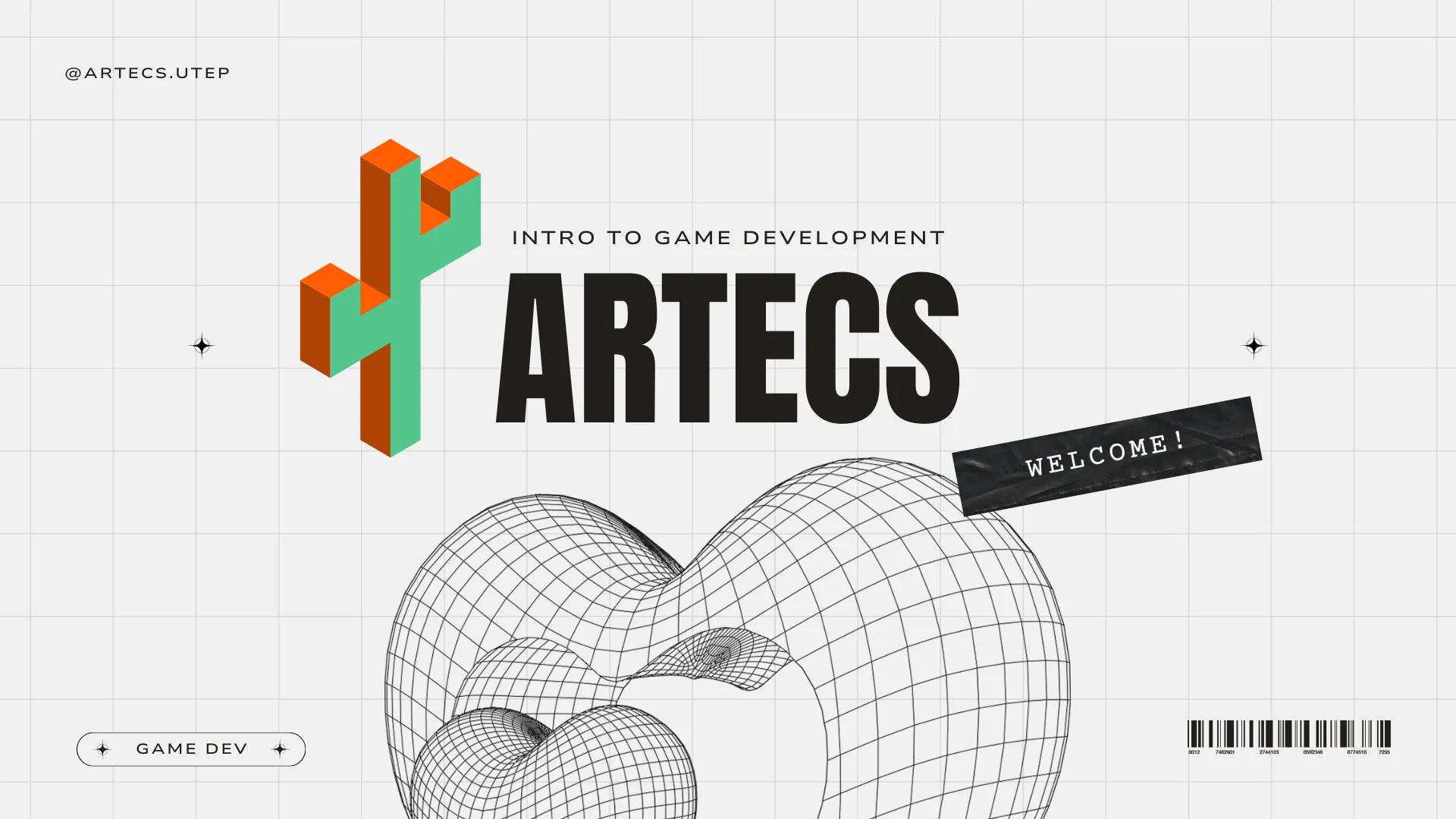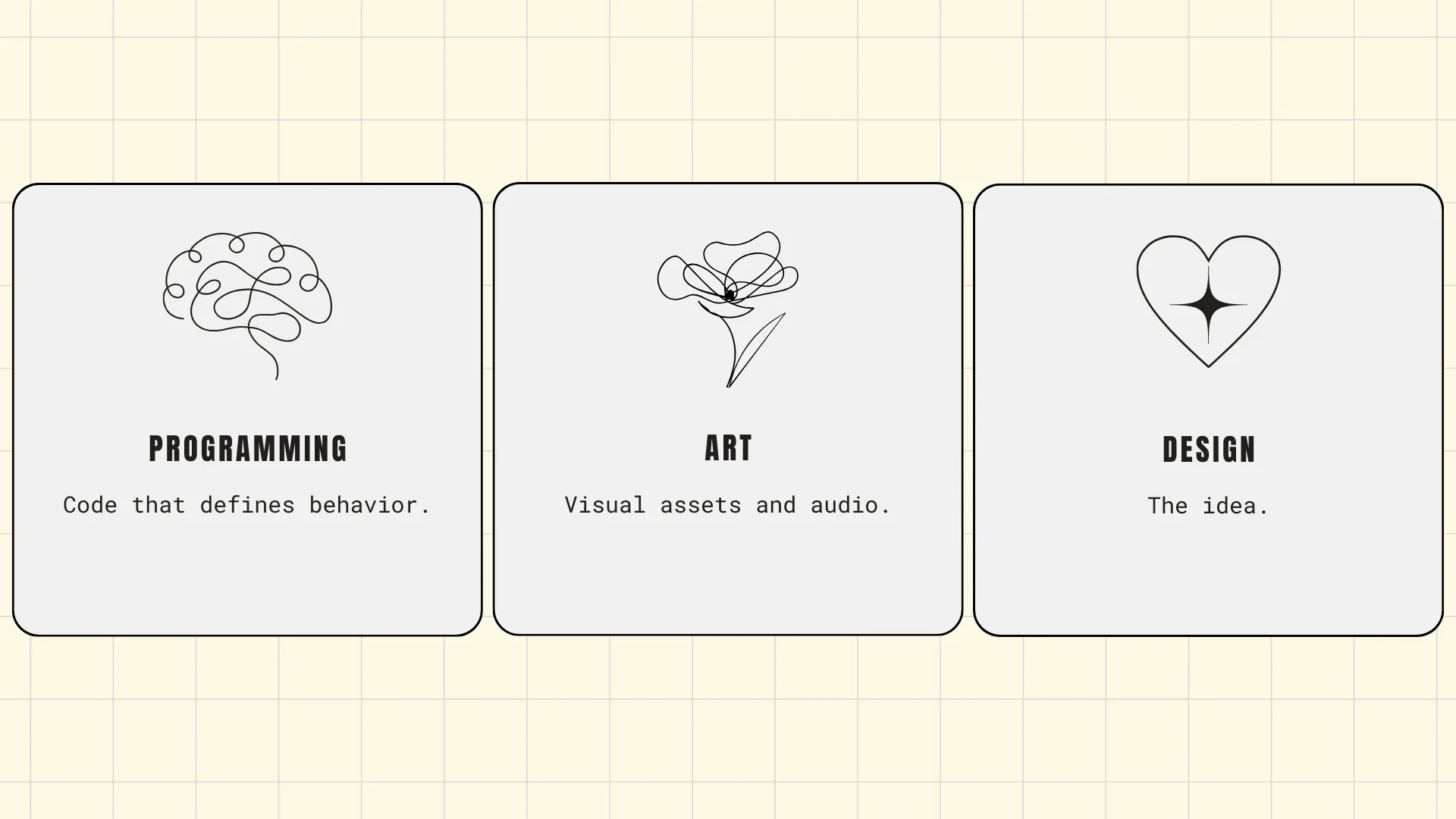
Godot [0]: Introduction to Game Development
/ 4 min read
Table of Contents
What Is Game Development?
Game development is the process of designing, creating, and programming interactive digital experiences, commonly known as video games. It involves multiple disciplines, including game design, programming, art, sound design, and storytelling, to bring immersive and engaging worlds to life.

Computers Are Powerful but Need Precise Instructions
Game development is all about turning creative ideas into interactive experiences. But to make a game, we need a way to communicate our vision to the computer.
Computers don’t think on their own. They’re essentially lifeless machines that process instructions exactly as given.
If you tell a computer to “make a character jump,” it won’t understand unless you provide precise details:
- How high should the jump be?
- How fast should the character move?
- Should gravity pull them back down?
For example, in the Godot engine (a software framework used to build games), if you want to move a character, you might write something like this:
velocity.y -= 300 # Moves the character upThis line tells the computer to decrease the character’s vertical position, simulating an upward motion. The number 300 represents how much force is applied. Understanding how numbers and functions interact in code is essential for game development.
The Structure of Code in Game Development
Writing code isn’t the same as writing a sentence in English. Programming languages have strict syntax and structure, defined by the tools and engines developers use.
For instance, in Godot, functions follow a specific format:
definition_name(parameters): # Instructions go hereIf you wanted to create a function to make a character jump when a player presses a key, it might look something like this:
func jump(): velocity.y = -400Every function follows a predefined pattern, and learning how to read technical documentation will help you understand and use new functions effectively. The Godot documentation acts as a reference, much like a dictionary, allowing developers to look up specific code expressions and understand how they work.
How to Make a Game: A Simple Analogy
Making a game is a lot like cooking:
- Code = The recipe (instructions on how the game behaves).
- Assets = The ingredients (visuals, sounds, and other media used in the game).
- Game engine = Kitchen tools (the software that helps combine everything into a playable game).

Without code, the game has no structure.
Without assets, it lacks visuals and sounds.
And without a game engine, there’s no way to put everything together efficiently.
Learning how to use these elements effectively is key to becoming a game developer.
Learning to Code for Game Development
Game development isn’t just about learning a programming language—it’s about developing a problem-solving mindset.
Throughout the learning process, you’ll encounter challenges that require creative solutions, like making an enemy chase the player or ensuring smooth movement physics.
By practicing game development, you’ll learn:
- Fundamental programming concepts such as variables, loops, and functions.
- How to structure your game’s logic efficiently.
- The ability to read and understand code from references and examples.
- How to think like a game developer and break complex problems into manageable pieces.
Your Journey to Becoming a Game Developer
No single course or tutorial will make you a professional overnight. Like any skill, mastering game development takes time and practice. The key is to start small—create simple games, experiment with mechanics, and gradually take on more complex projects.
With each project, your understanding will grow, and so will your ability to solve problems independently. The goal is not just to follow step-by-step tutorials, but to reach a point where you can build your own games from scratch.
What’s Next?
In the next sections, we’ll discuss:
Post by: Gabriel Alonso